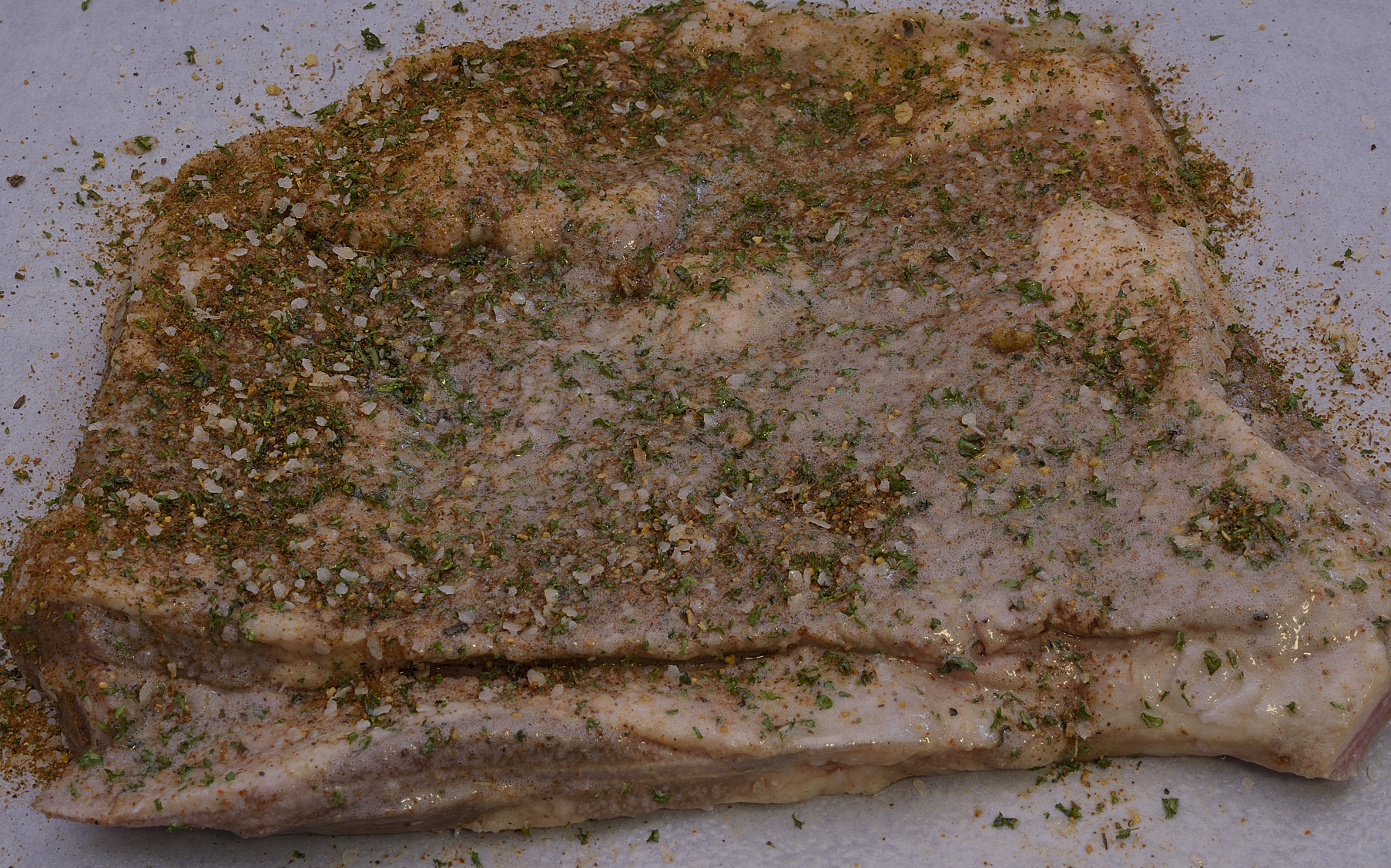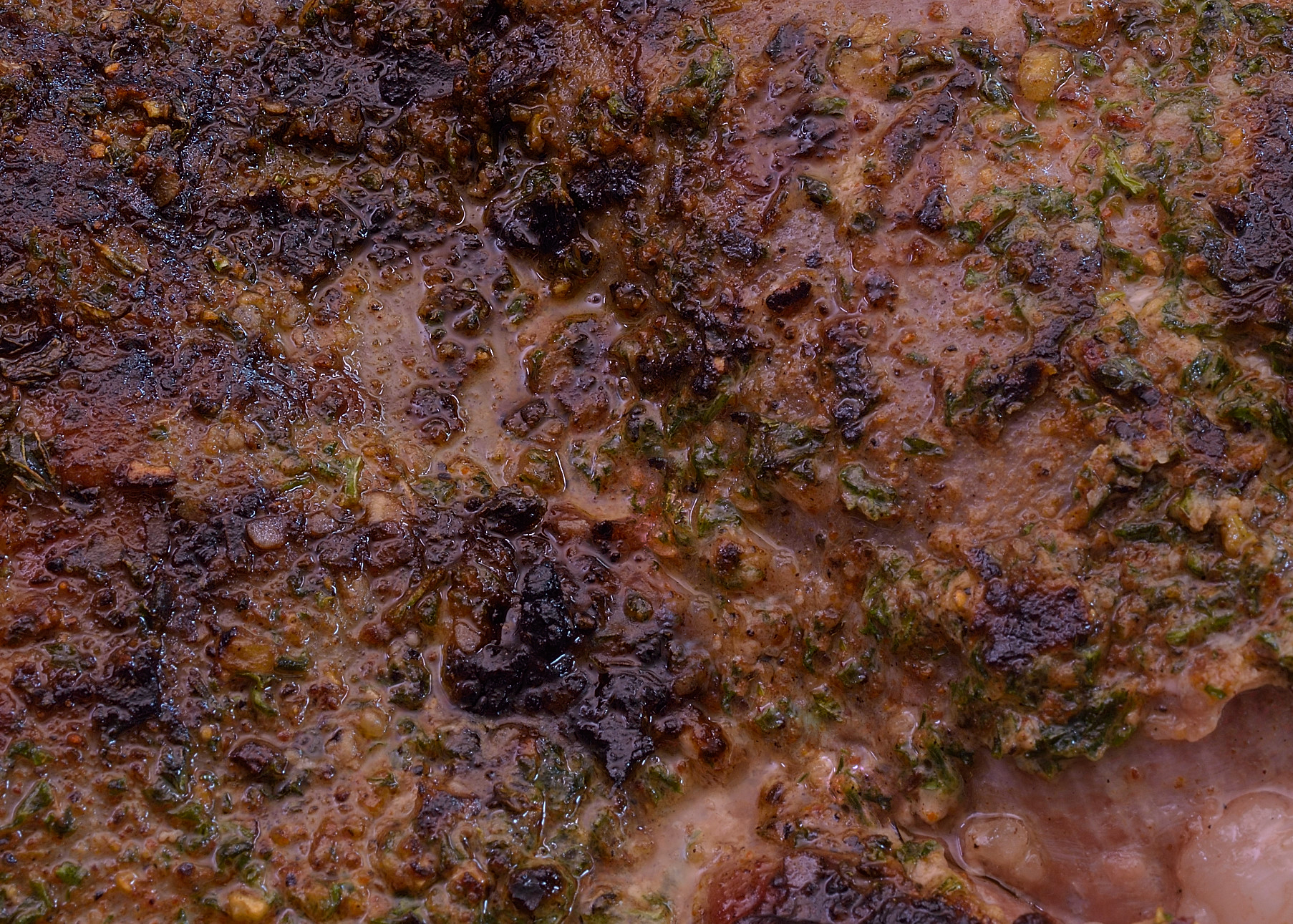What’s the French word for flap?
NickyUSA is a specialty meat broker that I call when I get a hankering for foie gras and other specialty proteins. They’ve been having a “fire sale” to move excess inventory accumulated as a result of the food industry-crippling quarantine. Oregon lamb wasn’t one of the discounted items, but I couldn’t resist picking up some racks on a recent trip down to the warehouse. Racks of lamb in the retail market are usually from New Zealand or Australia, perfectly good product. The foreign producers minimize weight based shipping costs by trimming and “Frenching” the racks before distribution. This reduces the mass of a rack by about 25%. The larger (and local) Oregon racks come completely untrimmed and require a little effort.
There is a large fatty cap that sits on top of the untrimmed rack–it has to be removed before you can strip the bones. Enveloped in that cap is a muscle called the latissimus dorsi. Surrounded by thick layers of fat on both sides result in it being relegated to the scrap heap. I’ve never seen them in the store. In the old days we would braise them and serve them to the help. That’s where I learned how to harvest them. If you should come across an untrimmed rack of lamb you can ask the butcher to remove the flap for you or you can muddle through on your own. If you are really determined you might contact me and I could talk you through it. We’ll pretend you have one in your possession.
Basic Ingredients:
Lamb shoulder flap (latissimus dorsi muscle), approximately 12 oz/350 g.
Egg whites, 1 each, mixed with 1 oz water. I buy egg whites in the carton–they are also available dried.
Seasonings, as needed.
Vegetable oil, a few drops.
All the pictured stuff:
Mediterranean relish:
Tomatoes, 1 each, torch peeled, seeds removed, diced.
Capers, 1 teaspoon.
Kalamata olives, 7 each.
Garlic, 1-2 cloves, smashed with a pinch of salt and chopped fine.
Extra virgin olive oil, a few drops.
Parsley, chopped, as much as you can bear to chop.
Baguette sliced on an extreme angle, as needed.
Sous vide processed sweet anise, as explained HERE.
Glace de viande, as explained HERE (optional).

Preheat your sous vide bath to 130 F/54 C. Vacuum seal the lean flap in a heat rated pouch and process for a minimum of 12 hours–this muscle does get some exercise during the lamb’s brief existence.

After processing, shock the entire package in iced tap water until it achieves 70 F/21 C. Refrigerate at 40 F/4 C until you are ready to proceed to service.

Remove the flap from the pouch and pat dry.

If you look in the foreground you can see a segment of the shoulder blade that the muscle protects. You may recognize it because pork rib eye chops from this end of the pig have the same appearance. Moisten the surface of the flap with a few drops of the egg white solution. Seasonings cling to the surface of raw meats because of the presence of albumins, a sticky protein similar to egg whites. SV processing denatures albumins on the surface of proteins, so replacing them will help us create a crust.

Sprinkle generously with one of the seasonings from the list linked HERE or use one of your own choosing. Preheat the oven to 350 F/176 C.

Coat lightly with oil (I used the spray stuff) and let it sit for a few minutes. This also helps the seasonings cling. Heat a cast iron broiler pan or skillet to 350 F/176 C and use a paper towel to rub with a few drops of oil. You can also spray the pan and then just rub the excess off. The lamb is going to release some fat so you don’t really need oil in the pan.

Place the flap in the pan with the seasoned side down and re-season the other side lightly if desired. Lamb browns quickly, which is another way of saying “burns before you know it” so this process will only take about a minute on each side.

After searing on both sides, transfer the flap to a sheet pan and stage into the oven for 20 minutes or thereabouts.

While the lamb is in the oven, assemble the relish (if you haven’t already).

Cut a slice of the sweet anise, season, oil lightly and grill. Grill the baguette or toast it in the oven at the same time as the lamb.

Remove the lamb from the oven and allow to rest for five minutes–this makes it easier to carve. Arrange the crostini and anise on the plate. Slice the lamb on the bias and top with the relish.






